Saintpaulia is a vivid representative of the numerous Gesneriaceae family. Wild varieties of senpolia (violets) grow in the tropical climate of Africa, near waterfalls and streams. For the first time, the plant was discovered and described by Baron Walter von Saint-Paul, in whose honor the flower got its name. This happened in Tanzania, near the Uzambara mountains, so the senpolia can often be found under the name "Uzambara violet."
Today, violet is very popular due to varietal variety and a long flowering period. Saintpaulia is referred to as non-capricious plants, therefore beauty care at home The conditions are simple enough. When following the simple rules of care, a room flower will delight with lush flowering almost all year round.
Content
Characteristics of Saintpaulia, varietal diversity
Uzambara violet, or senpolia, is a low-growing perennial plant that has a compact stem and many elastic, fleshy leaves. Most species are characterized by heart-shaped leaves with a pubescent surface, but there are varieties whose foliage edges can be smooth, corrugated, wavy or jagged.
The pubescence of foliage also depends on the species - you can find smooth-leaved, slightly pubescent and densely pubescent violets. The color of the leafy part is green, with a white border or light green (less often white) spots.
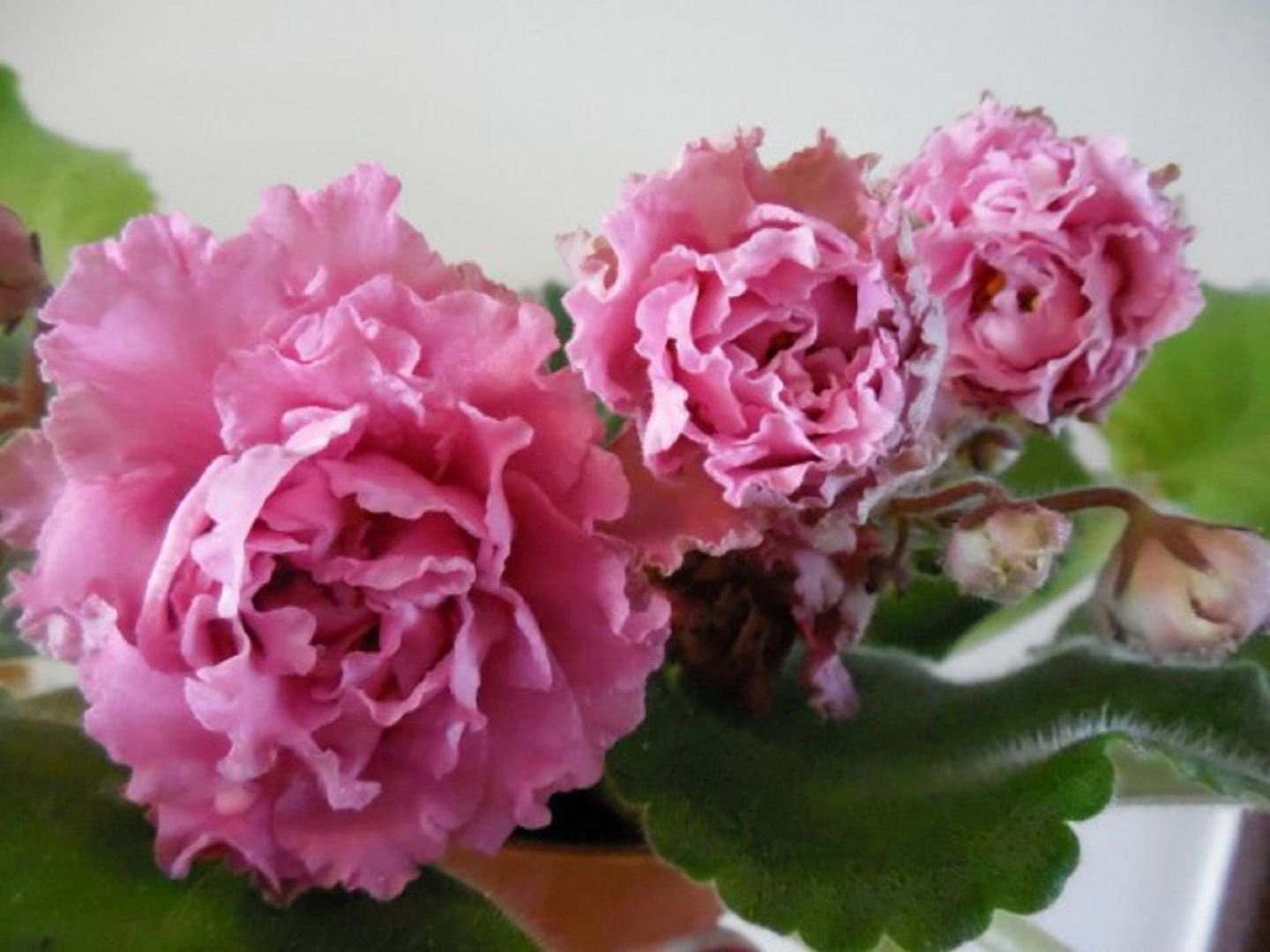
Both foreign and domestic professionals were involved in breeding, so today there is a huge selection of varieties (more than 32,000). Among domestic varieties, flower growers distinguish the following:
- Violet Duchess has large flowers, the diameter of which reaches 3 cm. The flowers can be double and semi-double. Against the background of dark green pubescent leaves, snow-white petals with large blueberry or raspberry spots open.
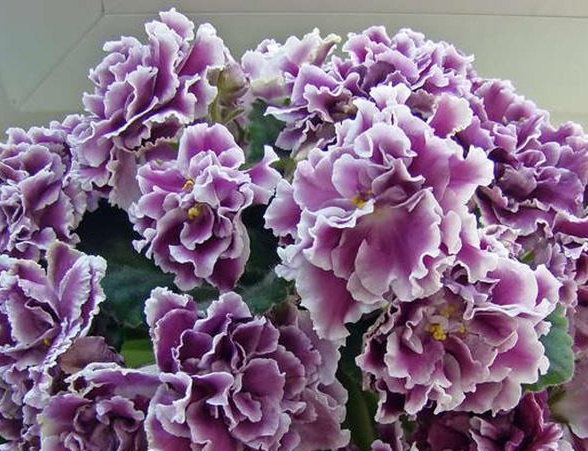
Violet Duchess - The Velvet Blues variety is distinguished by its huge flowers of a dark blue color with a purple tint. The diameter of a blossoming flower can be up to 7 cm. Shiny leaves are slightly pubescent and have a dark green hue.
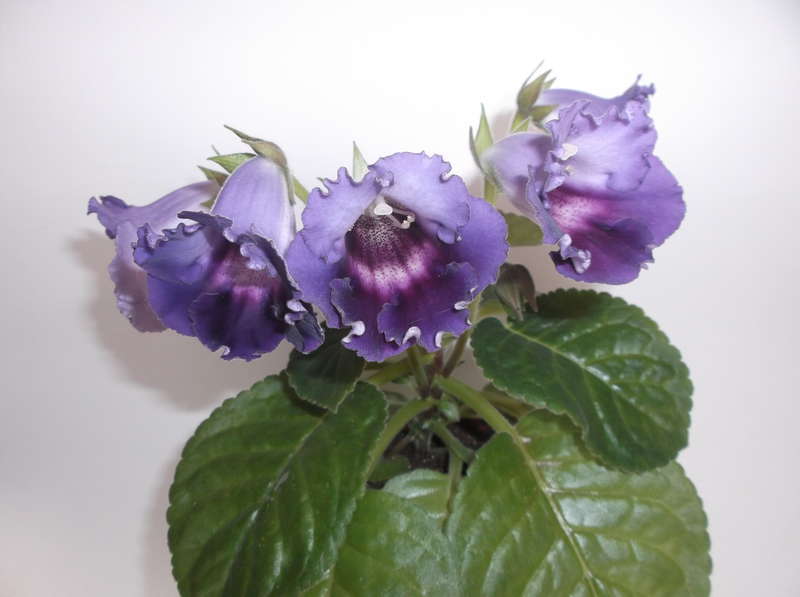
Velvet blues - Grade Your Majesty is characterized by delicate pink flowers. A double flower forms many petals and majestically rises above the green foliage. In the flowering phase, the violet seems to consist of lush pink bows with a yellow center.
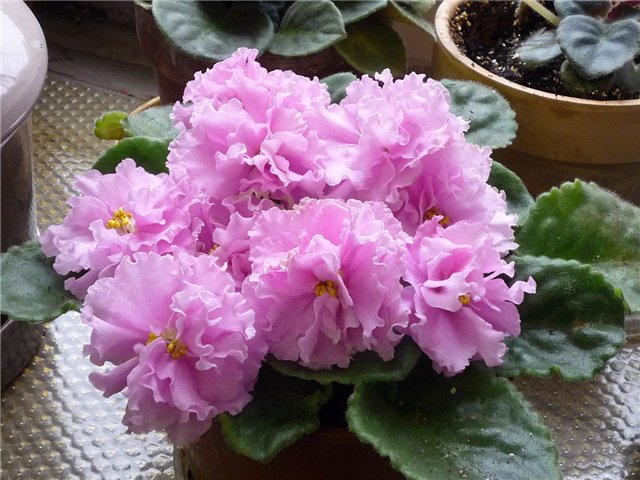
Your majesty
Among foreign varieties, the following violets are often grown:
- Senpolia Kromka Zarya has spoon-shaped oval leaves of green color. Star flowers are painted in pink and peach with a red border at the edges of the petals. The variety needs good lighting and low air temperature;
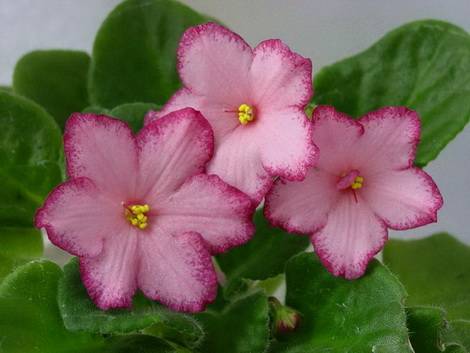
Edge of the Dawn - Variety Concord (Consent) refers to violets, chimeras. For three months, the plant blooms semi-double or simple flowers. On a white background of the petals, large dark blue stripes stand out clearly. Round quilted foliage is painted in dark tones of green;
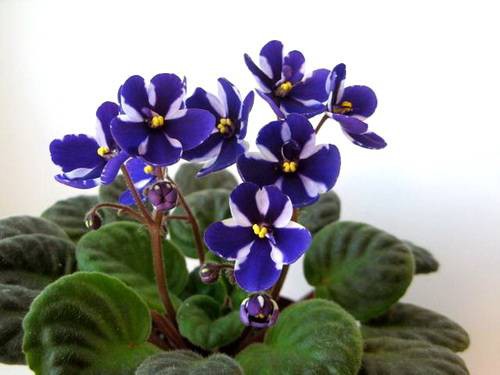
Concord - Madame Bovary's ampoule violet has small double flowers, which are painted in dark cherry color.Petals around the edges are surrounded by a thin white border.
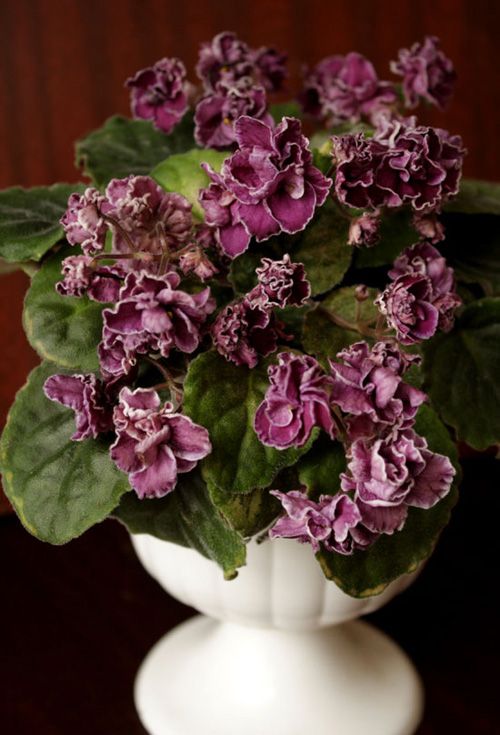
Madame Bovary
Senpolia care at home
Violets are considered unpretentious plants, but it is difficult for beginner growers to create a suitable living environment at home. With proper care, the plant pleases with flowering for a rather long time.
Lighting
Good lighting is the main condition for growing Saintpaulias. If it is not possible to provide adequate lighting, it is better to refuse to buy violets, because flowering and growth depend on this factor.
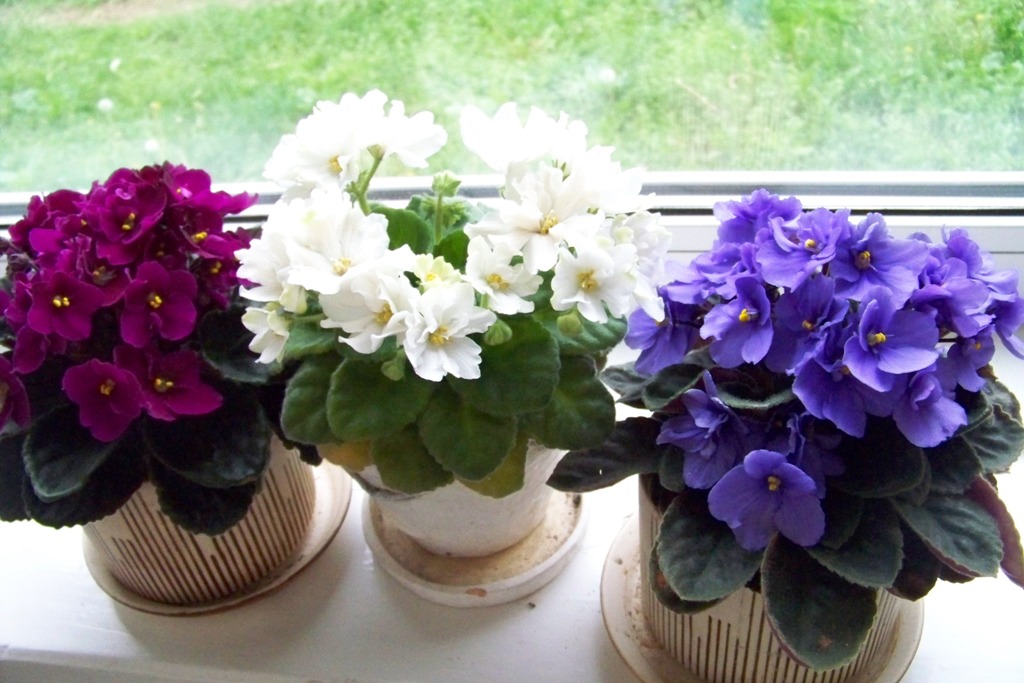
If you put it on the south side of the house, then you need to take care of protection from direct scorching rays. It is important to remember that for full flowering a plant needs 13 hours of light day. This is especially true for the winter period, so it is advised to use additional light sources at this time.
East and western window sills are perfect for growing a flower, but on the north side it will experience a lack of light. It is advised to periodically turn the pot so that the rays evenly illuminate the foliage.
 You may be interested in:
You may be interested in:Temperature and humidity
The plant does not like sudden changes in temperature and cold drafts, so in the summer it is not recommended to put it on the street or open balcony. The air temperature throughout the entire growing season should be in the range of 18-20 ° C. During the rest period, this indicator is slightly reduced, but not lower than 15 ° C, otherwise the flower stops growing.

From the ingress of drops of water, the aboveground part not only loses its decorative appearance, but also a risk of developing diseases. You can spray the air around the flowerpot or put water containers next to it.
Watering and feeding
The senpolia should be watered moderately, after the top layer of the earth has dried. When carrying out this procedure, it is worth knowing that overflow is much more dangerous than a small drought. Water for the plant is taken well-kept and at room temperature. During active vegetation, it is advised to water in the morning, and in the autumn-winter period it is better to carry out this manipulation in the afternoon.
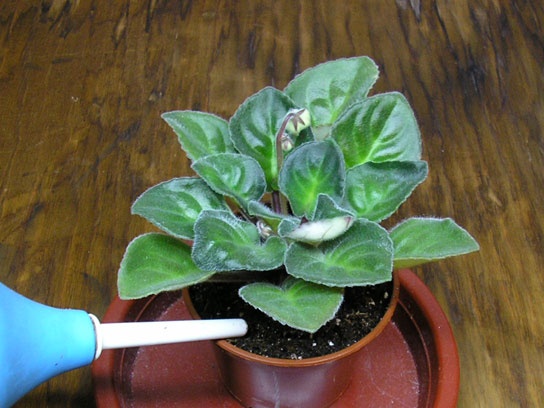
Senpolia needs regular top dressing during the aerial part building. As fertilizers, you can use the fertilizer complex for flowering crops, only dilute it with twice as much water than indicated on the package. Nutrients are added no more than once every 10-15 days.
Diseases, pests and treatment of uzambara violet
With improper care, the immunity of violets weakens, which leads to the appearance of diseases and the need for treatment. The most common problem when growing indoor plants is powdery mildew, which affects the leafy part. When white plaque appears on the leaves, the flower should be treated with Fundazole.
Late blight is one of the most dangerous diseases, because when it is detected, the plant is destroyed, after which the pot is thoroughly sterilized. When gray spots appear on the green mass, the senpolia is cut off and treated with a fungicide. Gray spots indicate the appearance of gray rot. It is worth paying attention that the soil in which the flower was grown must be thrown away.
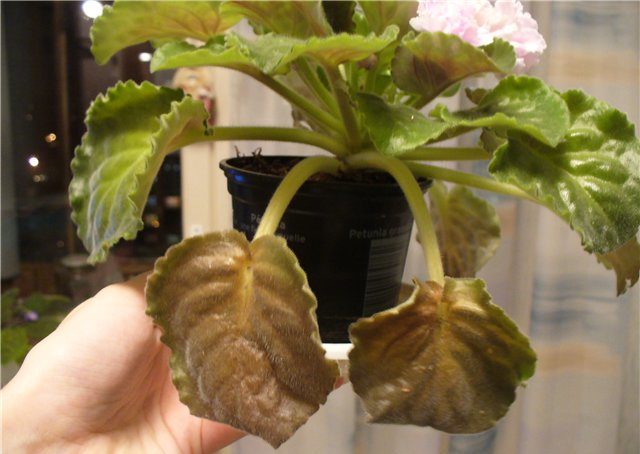
With excessive watering, the plant can affect fusarium, which leads to decay of the foliage. When rot is detected, a special fungicide is used.
Among the pests that can attack the flower, the most dangerous is the spider mite.He leaves white cobwebs on the foliage or as if brown marks were eaten away. You can get rid of it with the help of insecticidal drugs. When a scale appears, insects are collected manually, after which Aktara is foliage treated in several stages.
Reproduction and transplantation of senpolia at home
With the onset of spring, gardeners are adding more work, because this is the most suitable time for transplanting and propagating indoor flowers. Violet lends itself perfectly to reproduction, and this can be done in a variety of ways: leafy cuttings, peduncles, stepsons and seeds.
Landing and transplanting
Young senpolis are advised to transplant annually, adults - once every two to three years or as needed. If the foliage is too thick, pick up a pot one size larger than the old. The flowerpot does not need to be taken too large, its diameter should be 3 times smaller than the diameter of the leaf socket. Next, proceed with the preparation of suitable soil. The composition of the soil should include the following components:
- coniferous and soddy soil;
- leaf humus;
- charcoal;
- sphagnum moss and swamp moss;
- sand.
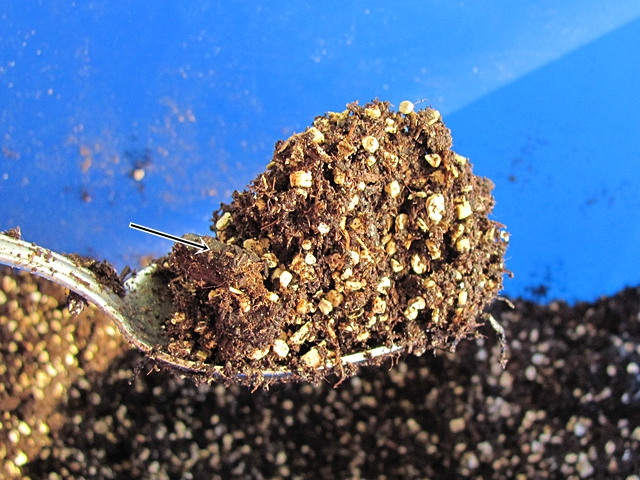
If it is not possible to prepare such a substrate, you can buy a ready-made filler for senpolia. The transplant is carried out as follows:
- Drainage material and a layer of substrate are poured into a new pot.
- The old flowerpot is supported so that the fingers are on both sides of the foliage. The edge of the pot should be lightly knocked, which will allow you to quickly remove the earthen lump.
- Very carefully proceed to the removal of old soil. This can be done with a stick or pencil.
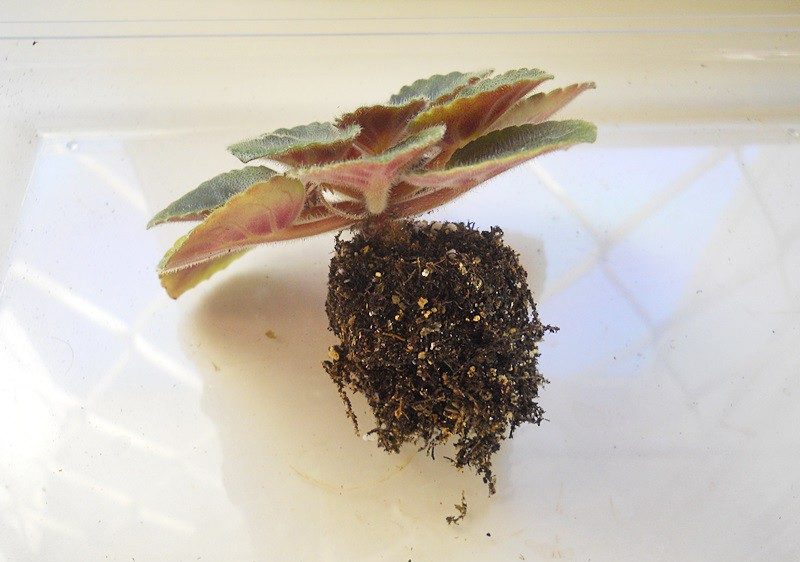
All soil should not be removed from the roots, because fragile roots will be damaged. - The violet is placed in the center of the new container and the voids are covered with fresh soil mixture.
- Make sure that all the roots are sprinkled with soil, after which the earth is slightly compacted.
After the procedure, the pot is placed in a shady place and is not watered for two days.
Propagation by leaf cuttings
Propagate the violet leaf by the force of even an inexperienced grower. It is fashionable to carry out this method in three ways: with a leafy cuttings in the ground, in water, or with a piece of leaf.
Beginners are advised to use propagation by cuttings in water, because you can monitor the formation of the root system.
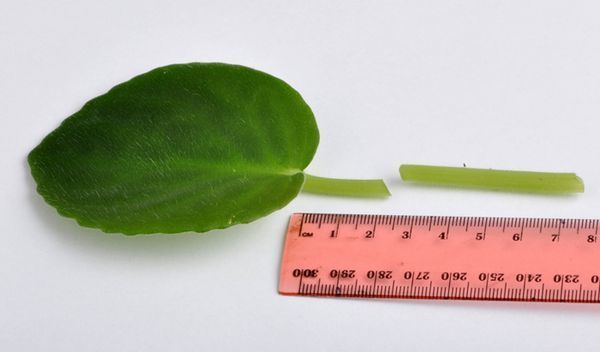
Then placed in clean water (you can dissolve a tablet of activated carbon) by about 1 cm.
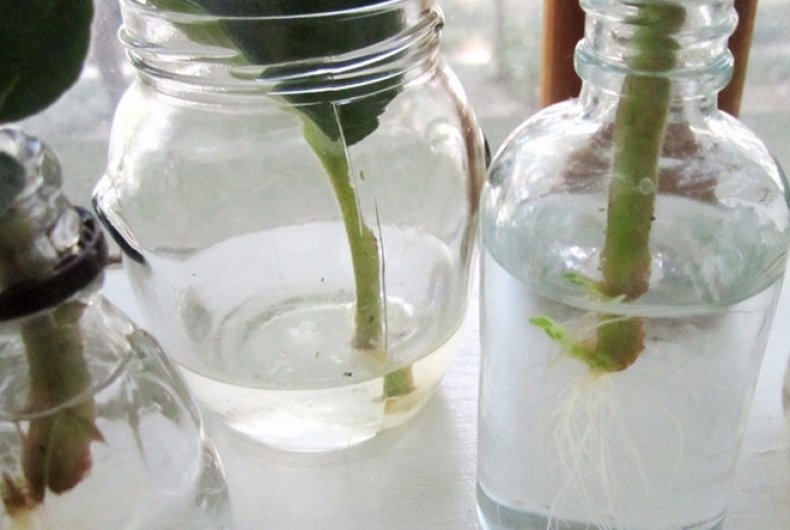
The cut sheet can be immediately placed in the soil. For a positive result, the container should be covered with a transparent plastic bag or other material to create greenhouse conditions.
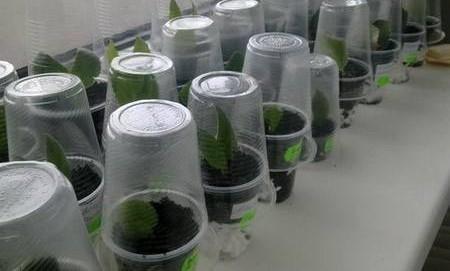
Seed propagation
In home floriculture, violets are propagated by seeds extremely rarely, most often they use the method of rooting the leaf. Small, like dust, seeds can be germinated all year round. To do this, carry out such manipulations:
- seeds are sown on moist soil without sprinkling with soil, and covered with glass or film;
- the container is placed in a bright room and they expect the appearance of young shoots in 2-3 weeks;
- periodically spray the soil to maintain moisture, and also air the mini-greenhouse every day;
- after the formation of several leaves, you can plant seedlings in a wide container. The distance between the shoots should be about 5 cm.
Seedlings are transplanted only after they are sufficiently strong. The procedure is carried out by the method of transshipment of an earthen coma.
Common Growing Questions
Varietal variety of senpolias will not leave indifferent any lover of flowering plants. With proper care, this flower is sure to decorate the room with lush and long flowering.

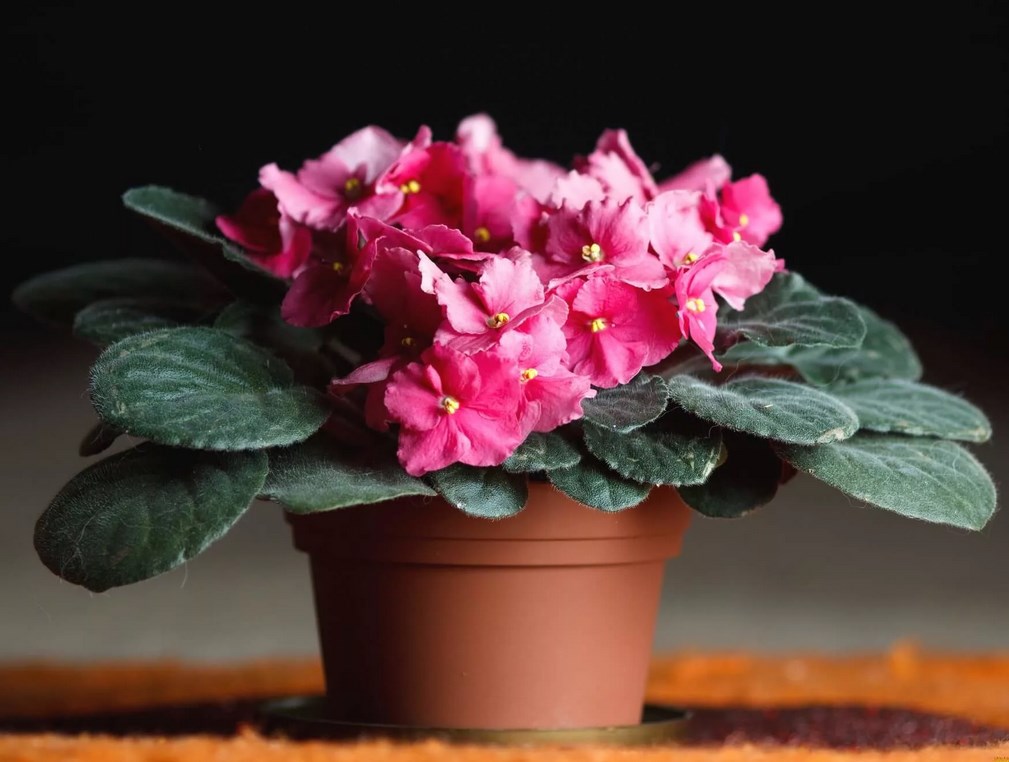
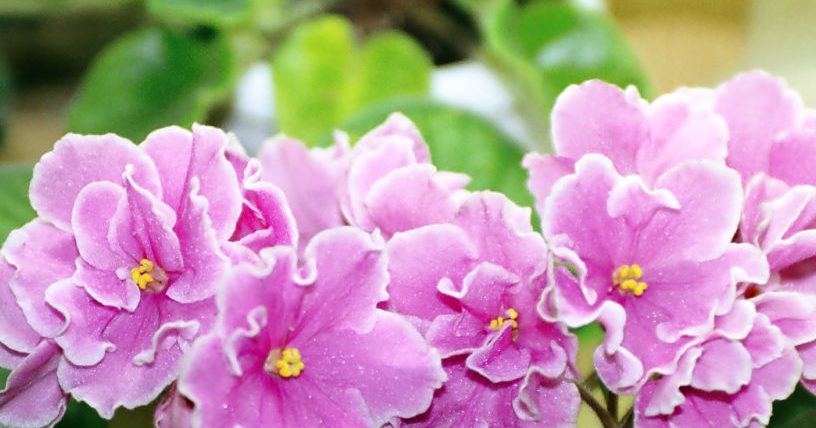
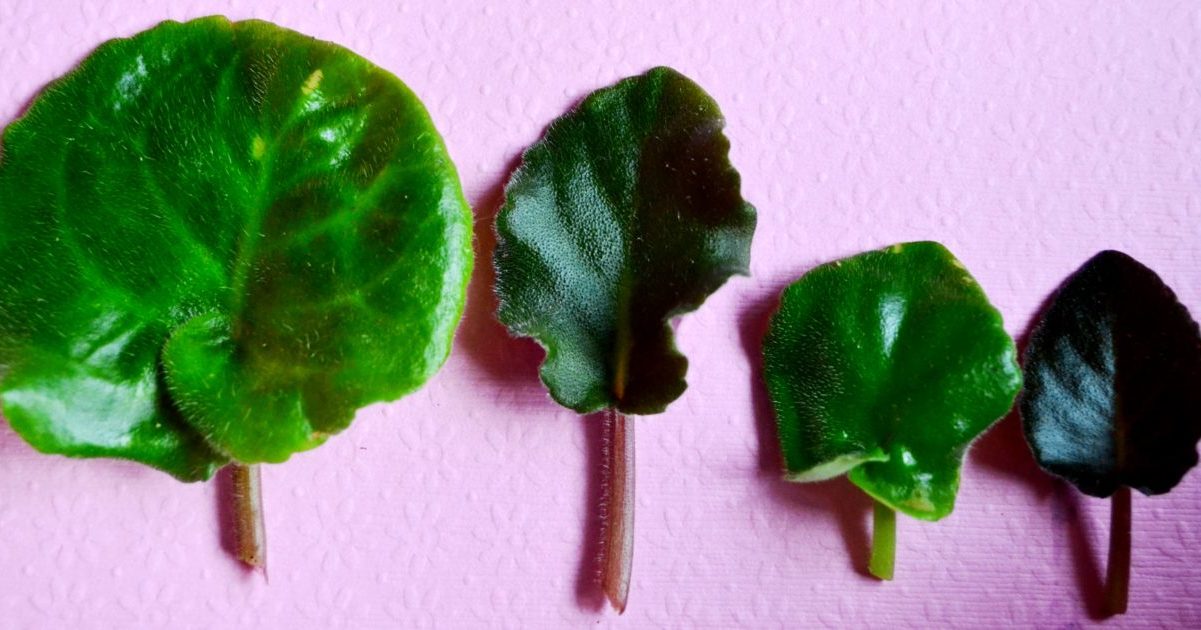
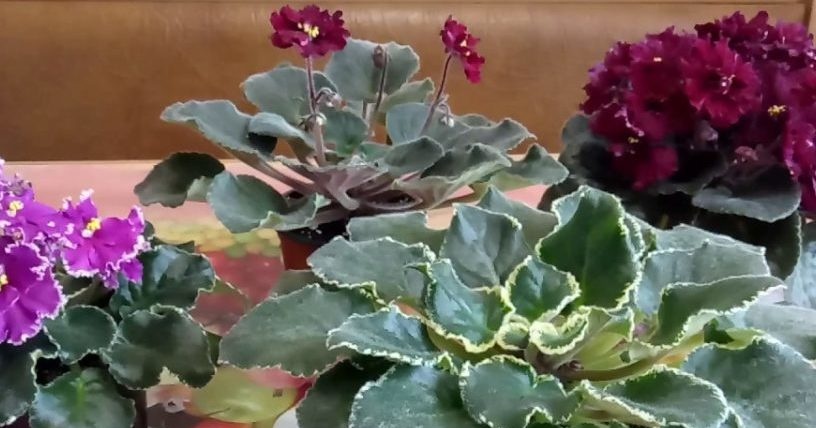 Why violets do not bloom - what to do to bloom and how to fertilize?
Why violets do not bloom - what to do to bloom and how to fertilize?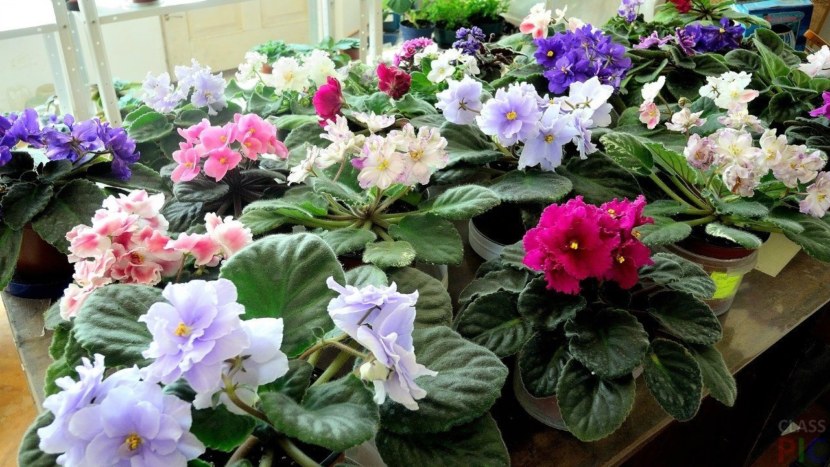 Indoor violet: proper care, pruning, reproduction at home
Indoor violet: proper care, pruning, reproduction at home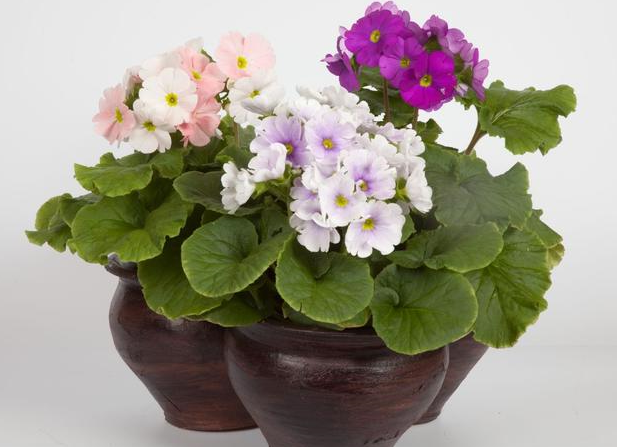 A few tricks and your violets will bloom 10 months a year!
A few tricks and your violets will bloom 10 months a year!